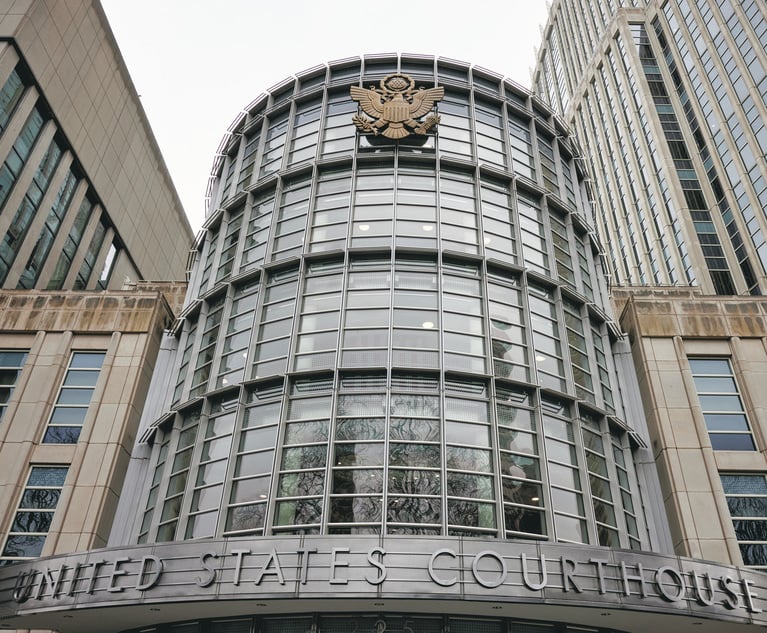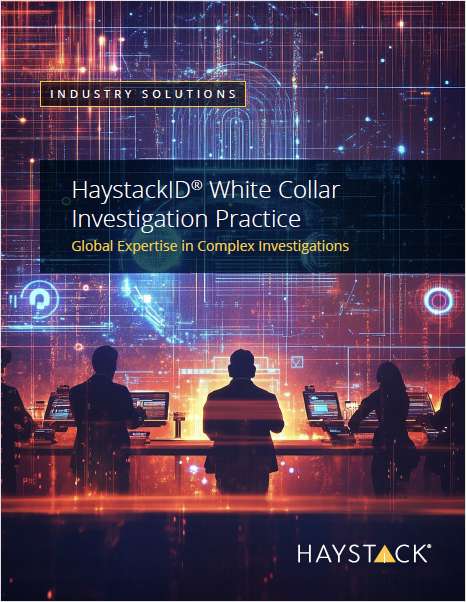Study Finds Law Schools Are Losing $1.5 Billion Annually in Tuition
A comprehensive analysis of how law schools have responded to the shrinking applicant pool concludes that the decision by top law schools to reduce their class sizes likely staved off the closures of 20 weaker law schools.
October 04, 2018 at 01:31 PM
7 minute read
The dramatic drop-off in law school enrollment from 2010 to 2016 is costing campuses a cumulative $1.5 billion in lost tuition each year.
That jaw-dropping figure comes from a new paper by a pair of law professors and an economist who set out to quantify the extent to which the so-called crisis in legal education has changed law schools and the way they conduct business.
What they discovered was not only that class sizes shrunk significantly at many schools, but that fierce competition for students brought down the actual cost students pay for a law degree. The average price to obtain a Juris Doctor in 2016 was 6 percent lower than it was in 2010, once inflation and increased scholarships are taken into account, the paper found.
That lower net cost, coupled with the 36 percent decline in applicants from 2010 to 2016, means law schools today are bringing in far less in tuition dollars, to the tune of $1.5 billion annually. Meanwhile, the academic credentials of new law students— their scores on the Law School Admission Test and undergraduate grade-point averages—dropped precipitously over that period, though that decline was noticeably steeper at law schools outside the elite top tier.
“It's absolutely shocking,” said Bernie Burk, a former professor at the University of North Carolina School of Law and co-author of the paper, titled “Competitive Coping Strategies in the American Legal Academy: An Empirical Study.” “Close watchers of the academy—people who spend time and effort understanding what's going on—have almost universally come back and said, 'Wow, I had no idea the changes were this big.'”
|
➤➤ Want more reporting on developments and trends in legal education? Sign up for Ahead of the Curve by Karen Sloan. Learn more.
Burk, along with University of St. Thomas law professor Jerome Organ and Duke University economics professor Emma Rasiel, gathered a raft of data from the 110 private law schools accredited by the American Bar Association, including enrollment figures, tuition data, and statistics on the LSAT scores and undergraduate grades of the students who enrolled during the crisis. (The authors were forced to exclude law schools at public universities from their analysis because they had no data on the percentage of students who were paying in-state and out-of-state tuition. However, a parallel analysis of public schools' enrollment and academic credential trends suggests their changes are comparable to those of the private schools.)
The authors then performed a statistical analysis to determine how those factors changed over a six-year period. They wanted to see how individual law schools dealt with the challenge of fewer applicants. Would they simply accept fewer students in order to maintain their LSAT and grade stats—a combo the papers refers to as their “profile”? Would they drop their listed tuition price, or simply offer deeper discounts on the back end through scholarships? Would they take in just as many students as before and accept that their median LSAT score and undergraduate GPA would decline, risking their U.S. News & World Report ranking and possibly their bar passage rate? (Not only did the applicant pool shrink during the study period, but the decline was most pronounced among applicants with high LSAT scores and strong undergraduate grades, meaning weaker candidates comprised a larger percentage of the applicant pool.)
The paper concludes that schools responded in each of those ways, or in combinations to varying degrees. But patterns emerged among schools at the top, middle and bottom of law school food chain. Unsurprisingly, schools in the top third of the bunch saw the least dramatic changes. The average LSAT score for new students at those schools dropped slightly from 166 to 164 during that time, meaning schools largely prioritized the profile of their incoming classes. But that choice came at a cost. The top third of schools nearly doubled the average amount of scholarships and grants students received, to almost $19,000. They also enrolled an average 13 percent fewer students. Even though their average listed tuition price rose 15 percent, in reality they brought in an average $5.9 million less annually.
“A lot of it turned out the way we expected,” Burk said. “The better your law school's reputation, the easier time you had dealing with the fact that demand for what you make was suddenly and drastically constrained.”
The decision by top schools to pare back their class sizes in order to maintain their student profiles as much as possible likely saved 20 weaker law schools from shutting down, the authors posit. Students rejected by the top schools ended up at middle-tier schools, with a trickle-down effect helping fill out classes at the middle- and lower-tier schools, according to the paper.
Law schools in the middle and bottom third, based on their reputations, faced larger struggles than their top-tier counterparts. Schools in the middle third, in particular, tried many different tactics to address the downturn in legal education with no dominant strategy, the authors found. Their average class size fell by 35 percent, and the average net tuition students paid dropped a whopping 16 percent, accounting for scholarships and grants. The authors calculated that middle-tier schools are bringing an average $11.6 million less in tuition annually as compared to 2010.
Meanwhile, the bottom-tier schools are faring slightly better than one might expect, though their numbers are still grim. The average net tuition students at those schools are paying is down just 6 percent, which is more in line with the decline at top-tier schools. However, there are far fewer students paying that tuition. First-year class sizes are down an average 46 percent, and those schools are bringing in $12.2 million less in tuition dollars, on average, the study found. Their median LSAT scores dropped from an average 151 to 147.
The deep discounting offered by law schools since 2010 means the range of prices law students are paying is wider than ever, the paper notes. Put another way, academically weaker students are paying more than their academically stronger classmates, even though their career and earning prospects are not as strong. Others have raised the alarm about this worrisome phenomenon, and the new paper offers further evidence of the practice.
This large-scale analysis of legal education amid its enrollment crises will help law school administrators gauge how their own campuses have responded in relation to competitor schools, Burk said. It's also useful in thinking through where legal education should go from here.
Enrollment stabilized in 2017 and applicants were up 8 percent for fall 2018 entering class—a welcome development among law schools. But any resulting uptick in enrollments this year won't come near restoring the legal academy to its 2010 heyday, Burk said.
“There are a bunch of administrators at law school scattered across the country who are being very clear-eyed and realistic about the world they live in now, and are figuring [out] new and different strategies to live in it,” Burk said. “But there are also a lot of people saying this is temporary, or who are so focused on coping with the pressure that these changes create year-to-year that they have no long-term view of what to do about it. That's terrible management.”
This content has been archived. It is available through our partners, LexisNexis® and Bloomberg Law.
To view this content, please continue to their sites.
Not a Lexis Subscriber?
Subscribe Now
Not a Bloomberg Law Subscriber?
Subscribe Now
NOT FOR REPRINT
© 2024 ALM Global, LLC, All Rights Reserved. Request academic re-use from www.copyright.com. All other uses, submit a request to [email protected]. For more information visit Asset & Logo Licensing.
You Might Like
View All
'What Is Certain Is Uncertainty': Patchwork Title IX Rules Face Expected Changes in Second Trump Administration
5 minute read
'No Evidence'?: Big Law Firms Defend Academic Publishers in EDNY Antitrust Case
3 minute read
Law Firms Are Turning to Online Training Platforms as Apprenticeship Model Falters

'Substantive Deficiencies': Judge Grants Big Law Motion Dismissing Ivy League Price-Fixing Claims
3 minute readTrending Stories
- 1Trump Taps Former Fla. Attorney General for AG
- 2Newsom Names Two Judges to Appellate Courts in San Francisco, Orange County
- 3Biden Has Few Ways to Protect His Environmental Legacy, Say Lawyers, Advocates
- 4UN Treaty Enacting Cybercrime Standards Likely to Face Headwinds in US, Other Countries
- 5Clark Hill Acquires L&E Boutique in Mexico City, Adding 5 Lawyers
Who Got The Work
Michael G. Bongiorno, Andrew Scott Dulberg and Elizabeth E. Driscoll from Wilmer Cutler Pickering Hale and Dorr have stepped in to represent Symbotic Inc., an A.I.-enabled technology platform that focuses on increasing supply chain efficiency, and other defendants in a pending shareholder derivative lawsuit. The case, filed Oct. 2 in Massachusetts District Court by the Brown Law Firm on behalf of Stephen Austen, accuses certain officers and directors of misleading investors in regard to Symbotic's potential for margin growth by failing to disclose that the company was not equipped to timely deploy its systems or manage expenses through project delays. The case, assigned to U.S. District Judge Nathaniel M. Gorton, is 1:24-cv-12522, Austen v. Cohen et al.
Who Got The Work
Edmund Polubinski and Marie Killmond of Davis Polk & Wardwell have entered appearances for data platform software development company MongoDB and other defendants in a pending shareholder derivative lawsuit. The action, filed Oct. 7 in New York Southern District Court by the Brown Law Firm, accuses the company's directors and/or officers of falsely expressing confidence in the company’s restructuring of its sales incentive plan and downplaying the severity of decreases in its upfront commitments. The case is 1:24-cv-07594, Roy v. Ittycheria et al.
Who Got The Work
Amy O. Bruchs and Kurt F. Ellison of Michael Best & Friedrich have entered appearances for Epic Systems Corp. in a pending employment discrimination lawsuit. The suit was filed Sept. 7 in Wisconsin Western District Court by Levine Eisberner LLC and Siri & Glimstad on behalf of a project manager who claims that he was wrongfully terminated after applying for a religious exemption to the defendant's COVID-19 vaccine mandate. The case, assigned to U.S. Magistrate Judge Anita Marie Boor, is 3:24-cv-00630, Secker, Nathan v. Epic Systems Corporation.
Who Got The Work
David X. Sullivan, Thomas J. Finn and Gregory A. Hall from McCarter & English have entered appearances for Sunrun Installation Services in a pending civil rights lawsuit. The complaint was filed Sept. 4 in Connecticut District Court by attorney Robert M. Berke on behalf of former employee George Edward Steins, who was arrested and charged with employing an unregistered home improvement salesperson. The complaint alleges that had Sunrun informed the Connecticut Department of Consumer Protection that the plaintiff's employment had ended in 2017 and that he no longer held Sunrun's home improvement contractor license, he would not have been hit with charges, which were dismissed in May 2024. The case, assigned to U.S. District Judge Jeffrey A. Meyer, is 3:24-cv-01423, Steins v. Sunrun, Inc. et al.
Who Got The Work
Greenberg Traurig shareholder Joshua L. Raskin has entered an appearance for boohoo.com UK Ltd. in a pending patent infringement lawsuit. The suit, filed Sept. 3 in Texas Eastern District Court by Rozier Hardt McDonough on behalf of Alto Dynamics, asserts five patents related to an online shopping platform. The case, assigned to U.S. District Judge Rodney Gilstrap, is 2:24-cv-00719, Alto Dynamics, LLC v. boohoo.com UK Limited.
Featured Firms
Law Offices of Gary Martin Hays & Associates, P.C.
(470) 294-1674
Law Offices of Mark E. Salomone
(857) 444-6468
Smith & Hassler
(713) 739-1250









